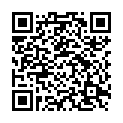|
|
|
| Module code: E2406 |
|
|
3P+2S (5 hours per week) |
|
6 |
| Semester: 4 |
| Mandatory course: yes |
Language of instruction:
German |
Assessment:
Practical test with term paper (60%), seminar presentation (40%)
[updated 08.01.2020]
|
E2406 (P211-0115, P211-0116) Electrical Engineering and Information Technology, Bachelor, ASPO 01.10.2018
, semester 4, mandatory course, technical
|
75 class hours (= 56.25 clock hours) over a 15-week period.
The total student study time is 180 hours (equivalent to 6 ECTS credits).
There are therefore 123.75 hours available for class preparation and follow-up work and exam preparation.
|
Recommended prerequisites (modules):
None.
|
Recommended as prerequisite for:
|
Module coordinator:
Prof. Dr. Albrecht Kunz |
Lecturer: Prof. Dr. Albrecht Kunz
[updated 10.09.2018]
|
Learning outcomes:
After successfully completing this module, students will possess comprehensive system knowledge in the field of communications engineering and thus, be able to advance innovative developments in their future careers. They will understand the techniques for setting up a cellular mobile network. They will be able to distinguish between different system generations in mobile communications and explain their common features. Students will be able to familiarize themselves with and apply various radio standards (Bluetooth, WLAN, etc.). They will be familiar with the principles of satellite navigation and be able to use this technique to develop a mobile navigation device that receives data from global navigation satellite systems and compares it with target coordinates. Students will be familiar with the possibilities of single board computers and will be able to use their programming skills to solve practical tasks in the lab class. With the knowledge acquired in the seminar and the lab class, students will be able to set up and operate a wireless communication channel. Lab tasks will be assigned to small teams. Within the teams, students must work together to solve practical tasks. They will use lab equipment to plan and carry out measurements. During the seminar, students must present the results of their group work in a well-structured, understandable and appealing manner, in order to inform their fellow students about the topics dealt with in the seminar/lab class. Students must write a technical "report" with a clear structure, appealing layout and concise wording.
[updated 08.01.2020]
|
Module content:
Telecommunications Seminar 1. Analog and digital modulation methods 2. Transmitting digital signals in the baseband 3. Multiple access method 4. Mobile radio systems (GSM, UMTS, LTE, 5G) 5. Radio standards for the close range (e.g. Bluetooth, WLAN) 6. Global navigation satellite systems (GNSS) 7. Satellite communication lab class 8. Structure and function of single board computers 9. Applications for controlling simple functions, e.g. controlling LEDs and transistors as switches 10. Storing data on external media (e.g. EEPROM or SD card) 11. Data exchange via infrared interface, TFT/OLED displays 12. Creating a Bluetooth transmission path, storing the data received on an SD card, transmitting data to a PC 13. Creating a WLAN transmission path, storing the data received on an SD card, transmitting data to a PC 14. Constructing a mobile battery-operated transmitter unit: using a GPS sensor, reading GPS data, displaying and transmitting GPS data via a radio transmission link (Bluetooth / WLAN) to a receiving station, displaying the data on a display. 15. Geocaching, importing GPS target data and comparing it with the actual GPS position
[updated 08.01.2020]
|
Teaching methods/Media:
Presentation with blackboard and projector during the seminar, use of telecommunication equipment in the lab (signal generator, oscilloscope, single board computer, radio modules, GPS modules)
[updated 08.01.2020]
|
Recommended or required reading:
Bauer, Manfred: Vermessung und Ortung mit Satelliten , Wichmann, (latest edition) Benkner, Thorsten: Grundlagen des Mobilfunks, Schlembach, 2007, 1. Aufl., ISBN 978-3935340441 Bonacina, Michael: Arduino Handbuch für Einsteiger, CreateSpace Independent Publishing Platform, 2017, 1. Aufl., ISBN 978-1544255491 Dahlman, Eric; Parkvall, Stefan; Skold, Johan: 4G, LTE-Advanced Pro and the Road to 5G, Academic Press, 2016, ISBN 978-0128045756 Freyer, Ulrich: Nachrichtenübertragungstechnik, Hanser, (latest edition) Gessler, Ralf; Krause, Thomas: Wireless-Netzwerke für den Nahbereich, Vieweg + Teubner, (latest edition) Kofler, Michael; Kühnast, Charly; Scherbeck, Christoph: Raspberry Pi: das umfassende Handbuch, Rheinwerk Technik, (latest edition) Korhonen, Juha: Introduction to 3G mobile communications, Artech House, 2003 Lüke, Hans-Dieter; Ohm, Jens-Rainer: Signalübertragung - Grundlagen der digitalen und analogen Nachrichtenübertragungssysteme, Springer, (latest edition) Mansfeld, Werner: Satellitenortung und Navigation, Vieweg + Teubner, (latest edition) Unbehauen, Heinz: Regelungstechnik, Vieweg + Teubner, (latest edition) Sauter, Martin: Grundkurs Mobile Kommunikationssysteme, Springer Vieweg, (latest edition) Werner, Martin: Nachrichtentechnik, Vieweg, (latest edition)
[updated 08.01.2020]
|


